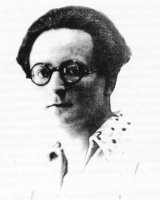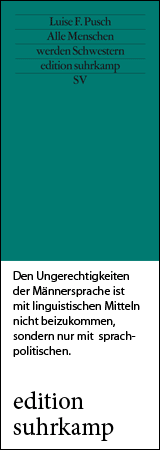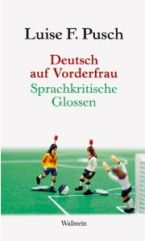
(Prof. Dr. med. Helene Wastl; Helene Lippay [Ehename])
Born 3 May 1896 in Vienna
Died presumably in summer 1948 in the USA
Austrian physiologist, first woman to achieve “habilitation” at the University of Vienna (= a second, more advanced dissertation than for the doctorate, required to become a university professor)
Biography
Biography
Helene Wastl was born on May 3rd, 1896 in Vienna. Her father, Peter Wastl, was an engineer and later a senior official (Oberstaatsbahnrat) for the railroad of the Austro-Hungarian empire. Helene’s parents originally came from Carinthia (Kärnten). In 1904 the family moved to Innsbruck. After grade school Helene attended the girls’ high school of the Ursuline Sisters in Innsbruck from 1907 – 1911. From 1912 or 1913 on she was a student at the state Gymnasium, or college-preparatory high school in Innsbruck. Her father died in 1913.
Determination, hard work and talent characterize Helene Wastl’s path in life. On June 6, 1916 she passed the Matura (= Abitur, graduation examination from college preparatory high school) with distinction, and in the winter semester 1916/17 she began to study medicine as one of eleven young women at the University of Innsbruck. Her college fees were waived by the university, at first by half, later completely; presumably this was because she was partially orphaned.
From her third semester onward she was employed at the Institute for Physiology under Ernst Theodor Brücke (1880-1941) as a “demonstrator” (a person who demonstrates, presents or exlains something in practice). Helene Wastl frequently resided abroad for study purposes. In 1920 she did research at the Physiological Institute in Groningen (Holland) for half a year. In 1921/22 she was an assistant at the Physiological Institute of the University of Innsbruck. She demonstrated her superior work in her oral exams for the doctorate: she received a grade of “excellent” in all three; and on 11 February 1922 she was promoted to Doctor of Medicine, only the second Austrian female to attain this title in Innsbruck.
After her promotion Wastl moved to the Institute for Physiology of the Faculty of Medicine at the University of Vienna, and from April 1922 on she was an assistant to the Pysiologist Arnold Durig (1872-1961), who valued her as an exceptionally capable scientist. Durig assigned her to give the lectures in “Physiology for Gym Teachers.” Further postgraduate study took Wastl to the Experimental-Pathological Institute of the University of Graz for six weeks in 1923. In 1924/25 she was granted a fellowship for research at the Physiological Institute of the University of Cambridge, England, with Professors Langley and Barcroft.
On April 24, 1928 she applied to be granted the venia legendi (authority to teach) in the field of physiology. She presented her habilitation project, Über die Wirkung des Adrenalins und einiger anderer Inkrete auf die Kontraktionen des Warmblütler-Skelettmuskels (On the Effect of Adrenalin and certain other Hormones on the Contractions of the Skeletal Muscles of Warm-Blooded Animals) as well as forty additional scientific papers (e.g., on physical and chemical characteristics of the blood, on questions of nutrition and the topic of stimulus-physiology). Indicative of how unusual it was that a woman should apply for permission to teach is the lengthy waiting time before a decision was made, compared to male scientists. A decision was not reached until almost two years later, on 22 January 1930. Durig valued Wastl’s work and pedagogical ability, while co-evaluator Roland Grassberger (1867-1956), head of the Institute for Hygiene, though praising the thoroughness of her work, nevertheless criticized the form of her presentation as “not strictly critical,” or (most likely) formulated in too popular a manner. The professorial committee granted her the right to teach with 21 ayes and three nays. On February 4, 1930 the Ministry of Education approved the decision, thereby making Wastl the first “habilitated” female medical instructor in the history of the University of Vienna.
 By this time Dr. Helene Wastl was evidently already internationally known and respected, for Durig asssumes in his opinion concerning her application for habilitation that she will soon receive an offer from an American university or women’s college, and he emphasizes the importance of keeping so qualified a person in Vienna. In 1930 she made another study-research trip to England, and during the summer semester of 1931 she visited various European countries to conduct studies of population nutrition on behalf of the Hygiene Section of the League of Nations.
By this time Dr. Helene Wastl was evidently already internationally known and respected, for Durig asssumes in his opinion concerning her application for habilitation that she will soon receive an offer from an American university or women’s college, and he emphasizes the importance of keeping so qualified a person in Vienna. In 1930 she made another study-research trip to England, and during the summer semester of 1931 she visited various European countries to conduct studies of population nutrition on behalf of the Hygiene Section of the League of Nations.
From September 1931 on Wastl taught in the the USA, heading the Department of Physiology at the Women’s Medical College of Pennsylvania in Philadelphia. Her contract, originally for one year, was repeatedly renewed. In 1932 Wastl resigned her position as Assistant at the Vienna Institute for Physiology because of her work in America and asked to be released from her lecturing responsibilities as a Privatdozentin there until 1936. Wastl must have spent time in Vienna at least once again during July, 1932, for on July 9 she married her physiologist colleague of many years, Franz Lippay (1897-1965) before returning to the USA. (She nevertheless continued to go by the name Wastl.) Franz Lippay remained in Vienna and emigrated to Australia in 1938 “for racial reasons.”
Helene Wastl became unable to work after January 1934 because of a riding accident, and since total recovery seemed uncertain, her contract with the college was not renewed. (She declined a leave of absence, most likely for financial reasons.) Her next position was in the Department of Physiology and Biochemistry at Cornell University (Ithaca, New York), where she conducted research as a “Resident Doctor.” Her contract was not renewed for 1935/36 (no reasons were given). Since her residence-registration certificate (Meldenachweis) indicates that soon after this she was staying in Saratow in the Soviet Union, it is presumed that she may have been working at the Medical Institute there.
In January 1935 Wastl and Lippay were separated. Wastl was dismissed by the Medical Faculty of Vienna University “because of her lineage” (Abstammung) in 1938 (the year Austria was “joined” to Nazi Germany). In October of the same year the divorce was finalized.
From 1938 on Helene Wastl held a position at the Hahnemann Medical College in Philadelphia as a Research Associate in pharmacology and later in anatomy; she published a series of scientific studies, some of them in collaboration with the Professor for Homeopathy, Garth Boericke.
In 1943 her Austrian citizenship was revoked (by the Nazis), and because of this the University of Vienna also revoked her doctoral title and teaching privileges the following year. During the 1940’s Wastl’s trail goes cold in the USA. It is thought that she died in the summer of 1948, but other dates for this can also be found. According to the notations of her colleague Mona Spiegel-Adolf she must still have been alive at least until after the end of World War II, but was no longer “able to gain a foothold in the scientific world.” Austrian scholars are currently attempting to shed light on Helene Wastl’s later years.
The University of Vienna’s treatment of its first habilitated female medical doctor hardly represents a proud chapter in its history. Only in 1960, when Cornell University appealed to it to restore Helene Wastl’s doctorate and habilitation, did the University begin to concern itself with her fate. The result: a renewed granting of the doctorate and habilitation could not occur because of her death.
(As of July 2008)
(trans. Joey Horsley)
For additional information please consult the German version.
Author: Almut Nitzsche
If you hold the rights to one or more of the images on this page and object to its/their appearance here, please contact Fembio.




